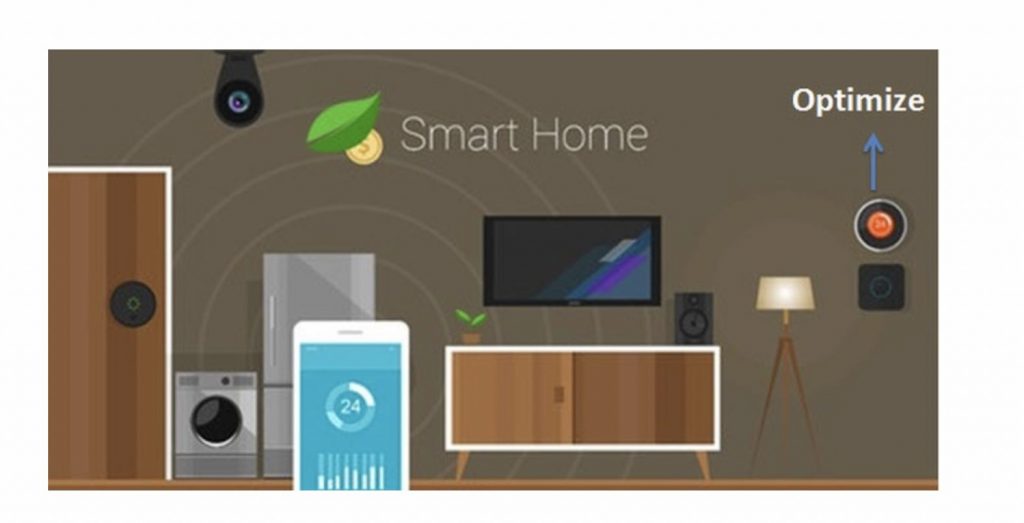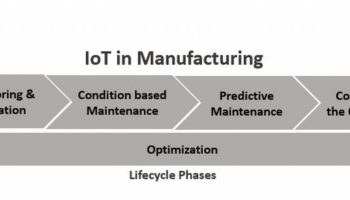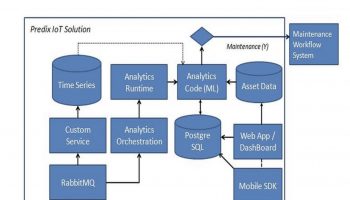This article is part of IoT Architecture Series – https://navveenbalani.dev/index.php/articles/internet-of-things-architecture-components-and-stack-view/
Connected home is an idea of creating a home where virtually everything is connected to the internet, from doors to lighting system, appliances (television, refrigerator, washing machine, etc.) and everything you can imagine of is connected and controlled remotely.
Before we delve into the use case, let’s understand the current landscape of a connected home and challenges that needs to be addressed. The real challenge in a connected home is using a standardized protocol for communication. Current vendors are taking a step in this direction, for instance providing a hub (think this as a device gateway) and a set of compatible devices which can communicate to the central hub. The devices include sensors to detect movements (when people arrive and leave home), vibrations, temperature, switches (to control small appliances like a thermostat) and lighting systems (like bulbs, led, etc.). The protocol used for communication is usually non-standardized, proprietary and low-frequency radio protocol like ZigBee or Z-wave which is typically used by lighting system (bulbs, led, etc.)
When we mean non-standardized, we mean that it is not possible to bring a connected TV from a different manufacturer, or a connected washing machine from a different vendor and make it talk to your connected home ( or hub we talked about). You don’t want to have multiple hubs and manage each one of them independently and some devices might not need a hub and can talk to the cloud platform directly via WI-FI. Everyone is providing a hub model and set of APIs (open source, proprietary) and prompting device manufacturers to build around the APIs for connectivity.
The real use cases are not about providing seamless connectivity, but once connected, what value you want to derive from a connected home. It’s not only about home automation, but how would you use the vast amount of data generated to come up with new business models and innovative solutions.
Let’s talk about one such case, where you would like to optimize the electricity usage across your home, predict electricity usage for the current month based on actual usage and optimize it for the remaining days in a month and identify patterns and recommendations from the system. Unless you gather data across these connected devices to understand the usage and electric consumption from the devices, it would be difficult to come up with services such as
- Home Electricity Utilization
- Home Electricity Monthly Prediction
- Home Electricity Optimization
- Home Electricity Usage Patterns
- Home Electricity Recommendation Savings
- Self-Optimization – Apply Recommendation

Energy is a valuable resource, and even a 10% reduction and savings would mean a lot to consumers as well as to the environment. We still see energy and load shedding happening in places and technology innovations like this could help resolve such problems in near future.
Let’s talk about options for seamless integration. One way is making all the devices talk to a common cloud platform and analyze the data, but it has its own challenges. The protocols and data formats would be different for different devices; the devices should be modified to add connectivity code to talk to the common platform and security needs to be looked at holistically. A common device gateways can be used which does this conversion, filters out the data and talks to cloud platform, but it would mean the rest of the devices connects to that common device gateway in a standardized way using a standardized protocol, else the device code needs to be changed to talk to the device gateway. The set of integration challenges would remain, but in future, we could see some convergence on a standardized protocol like AllJoyn, or using Google operation system (Brillo) as most smart systems now ships with some Android capability (like Smart TV, refrigerators, etc.).
IoT is a big ecosystem, and it would not be about one particular IoT platform or using one IoT protocol, but how large volume and variety of data can be consumed, correlated from multiple sources and analyzed to offer better outcomes – like optimization of electricity usage, predictive maintenance for connected components and better after-sales services of connected product to name a few. From an implementation perspective, we are looking at continuous machine learning models which learn from the data and provide optimization. The model updates can happen in near real-time in future, where feedbacks are continuously observed for better optimization.
Partnership would be equally important where a connected TV already have pre-shipped device connectivity to support a particular cloud platform (say, Microsoft Azure, IBM Bluemix or Amazon AWS). But you could have one device supporting Azure, other IBM, and the problem still needs to be resolved, as a System Integrator don’t want to add device connectivity code for each device and manage it.
We believe the connected home has a great future and would be part of consumer digital extension, but still, it has a long way to go and reap its benefits. Current products do provide connectivity to basic home appliances, tracking movements and behavior. Home automation is just a start, but real benefits can be seen only when there is seamless connectivity across all the connected products in a home, from doors to lighting systems, to any appliances (television, refrigerator, washing machine). This should be independent of any vendor or supported protocol. More importantly through data analytics, one should be able to derive observations and optimization that can benefit the end consumer. Imagine an effective energy optimization plan derived based on actual usage from a home (keeping security aspects in mind) being shared by other home systems to provide suggestions and patterns on how other home users can optimize their home energy consumption.
In the next article, we will look at how to implement IoT solutions using various cloud platforms




